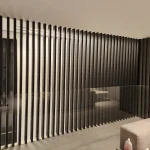
From Traditional to Trendsetting: How Aluminum is Transforming Classic Architecture

Durability Meets Style: Aluminum Cladding Panels by GTO Aluminum Manufacturing for Modern Construction

Building longevity is one of the most critical factors architects, builders, and property owners consider when choosing materials for construction. Aluminum cladding has rapidly gained popularity due to its exceptional durability and ability to enhance both the structural integrity and aesthetic appeal of buildings.
Beyond these qualities, aluminum cladding significantly extends the lifespan of structures, reducing maintenance costs and ensuring they withstand harsh environmental conditions. Let’s explore how aluminum cladding impacts the longevity of modern buildings.
1. Durability and Corrosion Resistance
One of the key reasons aluminum cladding contributes to long-lasting structures is its resistance to corrosion and rust. Unlike other materials such as steel, aluminum naturally forms a protective oxide layer when exposed to the elements, preventing further oxidation.
This makes aluminum cladding particularly suitable for buildings in coastal or humid environments where moisture and salt can degrade other materials. The use of high-quality aluminum alloys, such as the 3000 or 5000 series, enhances corrosion resistance, further extending the material’s lifespan by decades.
2. Low Maintenance Requirements
Aluminum cladding is widely recognized for its low maintenance requirements, making it a cost-effective choice for building owners. While traditional materials like wood and steel require regular painting, sealing, or treatments to maintain their appearance and structural integrity, aluminum cladding needs only occasional cleaning to remove dirt and environmental buildup.
Its ability to retain its aesthetic appeal without the need for frequent upkeep significantly reduces long-term maintenance costs and increases the building’s overall lifespan.
3. Weather Resistance and Impact Protection
Aluminum cladding is designed to withstand extreme weather conditions, including high winds, heavy rainfall, snow, and intense heat. In regions prone to storms or high-impact weather events, aluminum cladding systems can be reinforced with interlocking panels or impact-resistant coatings.
These systems prevent damage from flying debris or hail, reducing the risk of cladding detachment or structural damage over time. Additionally, the thermal expansion properties of aluminum are managed through proper installation techniques, allowing the cladding to adjust to temperature fluctuations without compromising its structural integrity.
4. Thermal and Acoustic Insulation
While aluminum itself is a good conductor of heat, modern aluminum cladding systems often include thermal insulation layers that improve a building’s energy efficiency. These systems help regulate indoor temperatures by reducing heat transfer, ensuring that buildings remain cool in the summer and warm in the winter.
This thermal insulation not only enhances occupant comfort but also reduces the stress on HVAC systems, leading to longer system lifespans and lower energy consumption. Furthermore, aluminum cladding can provide acoustic dampening, making it an ideal solution for buildings in noisy urban areas, thus preserving the building’s indoor environment.
5. Sustainability and Recyclability
Another factor contributing to the longevity of buildings with aluminum cladding is the material’s sustainability. Aluminum is 100% recyclable without losing its quality, which means that when a building reaches the end of its lifecycle or requires renovation, the cladding can be removed and repurposed.
This sustainability factor not only reduces environmental impact but also ensures that aluminum cladding remains a viable material choice for future generations. Its recyclability further enhances its appeal as a long-lasting building solution.
6. Fire Resistance
Fire safety is a paramount concern in modern construction, and aluminum cladding offers significant advantages in this area. Aluminum is non-combustible, meaning it will not ignite or contribute to the spread of fire.
Buildings clad in aluminum are better protected against fire hazards, which is particularly important in urban settings or industrial areas where fire risks are higher. In the event of a fire, aluminum cladding’s resistance to high temperatures can help contain the blaze and minimize structural damage.
7. Longevity and Cost-Effectiveness
The longevity of aluminum cladding, which can last up to 40-50 years or more with minimal maintenance, makes it an excellent long-term investment. While the initial installation costs may be higher than some other materials, the savings on maintenance, repairs, and energy efficiency quickly offset the upfront expense.
In the long run, aluminum cladding proves to be a cost-effective solution that extends the lifespan of buildings while maintaining a modern, sleek appearance.
Conclusion
Aluminum cladding is an ideal choice for enhancing building longevity, offering unmatched durability, weather resistance, and minimal maintenance needs. Whether in harsh climates, urban environments, or fire-prone areas, aluminum cladding provides comprehensive protection that significantly extends the lifespan of any structure.
For property owners, architects, and builders, this material offers a future-proof solution that aligns with modern sustainability goals and cost-effectiveness.
To explore how GTO Aluminum can enhance your building’s longevity, visit GTO Aluminum.






